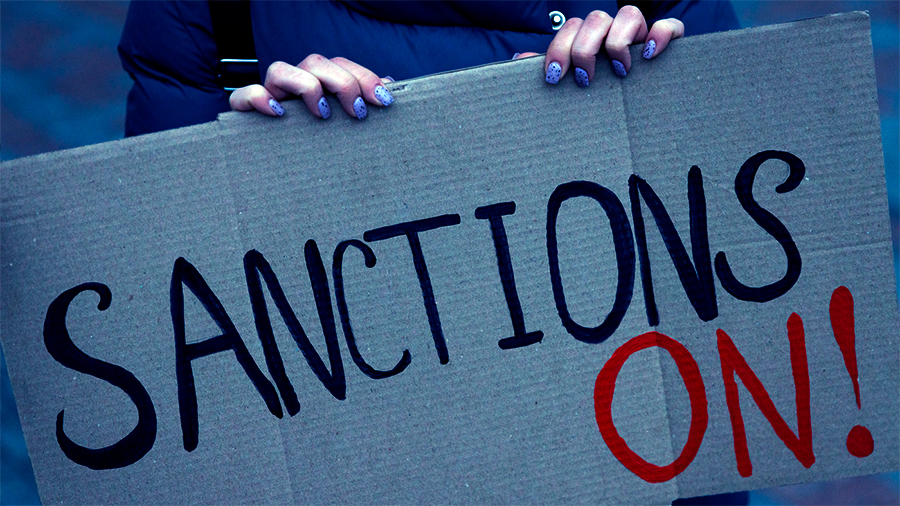How Sanctions Affect Access to International Lending
Global sanctions—whether trade-based, financial, or sector-specific—reshape the rules of cross-border finance. When institutions navigate sanctioned jurisdictions, access to capital becomes entangled with legal compliance, reputational exposure, and regulatory friction. These restrictions block entry to major banking corridors, sever correspondent banking relationships, and increase due diligence obligations. Whether you’re a borrower in a blacklisted country or a lender evaluating sovereign risk, sanctions heighten operational complexity. This article explores how sanctions impact lending channels, how banks and businesses evaluate exposure, and what happens when credit must flow through opaque or informal alternatives to circumvent restrictions.
Sanctions and International Lending: A Risk-Heavy Equation
Sanctions directly obstruct lending by barring transactions, freezing assets, and severing access to foreign currencies. For global lenders, engaging with sanctioned parties creates a high-risk environment with potential penalties reaching billions. The U.S. Office of Foreign Assets Control (OFAC) enforces secondary sanctions, which target foreign firms that transact with blacklisted entities. This extraterritorial reach discourages even neutral banks from financing otherwise legitimate projects. You’re not just weighing creditworthiness—you’re navigating political liabilities. Even indirect exposure, such as financing a joint venture involving a sanctioned shareholder, can trigger compliance flags and delayed fund releases.
Legal teams must scrutinize every touchpoint—ownership structures, source of funds, end-use of capital. Lenders risk losing access to dollar clearing systems if caught in violation, cutting them off from global liquidity. In sanctioned jurisdictions, borrowers face higher borrowing costs, often exceeding 20% annually due to country risk premiums. Without access to multilateral institutions like the World Bank or IMF, sovereign borrowers are forced to seek funding from less transparent lenders with shorter maturities and stricter terms.
How Compliance Risk Shapes Lending Decisions
Financial institutions prioritize compliance frameworks when deciding whether to extend credit to clients with exposure to sanctioned zones. You’re not just performing due diligence—you’re performing sanction-specific vetting. This includes identity verification against sanction lists, geographic screening, and real-time transaction monitoring. Compliance officers use tools like SWIFT screening, artificial intelligence, and blockchain tracing to detect and report suspicious activity.
Each deal now requires legal vetting and structured risk assessment. A single oversight could lead to regulatory actions, fines, or reputational collapse. In 2020, UniCredit was fined $1.3 billion for violating Iran-related sanctions. Such enforcement makes lenders extremely conservative, often opting to de-risk rather than navigate legal complexity. Loan committees increasingly review political risk maps, assess exposure to dual-use goods, and evaluate whether any sanctioned third-party intermediaries could trigger a red flag.

Increased Documentation and Reporting
Lenders often require:
- Beneficial ownership disclosures
- Trade flow documentation
- End-use certificates
- Currency origination reports
Every step of the transaction is now subject to granular analysis, significantly delaying lending timelines or causing institutions to exit the deal entirely.
Legal Complexity of Lending in Sanctioned Jurisdictions
Lending into countries like Iran, North Korea, or Russia after 2022 involves navigating an intricate web of international law, domestic regulation, and contract enforcement uncertainty. Even if the borrower isn’t directly sanctioned, banks must analyze the jurisdiction’s legal enforceability, insolvency regime, and international arbitration history. You may issue a credit facility—but collecting payment, enforcing collateral, or executing legal judgments becomes nearly impossible if the country is shut out of SWIFT or international courts.
Contract clauses must now include:
- Sanctions compliance provisions
- Force majeure adjustments
- Repatriation risk hedges
Furthermore, lenders must verify whether disbursed funds will support prohibited sectors such as military, nuclear, or energy infrastructure. Financial lawyers frequently structure synthetic loans via offshore special purpose vehicles (SPVs) to shield parent institutions from legal blowback. However, regulators increasingly scrutinize these indirect paths. Lending through third-party intermediaries or layered ownership chains often raises suspicion, particularly in sectors flagged for dual-use technologies.
Impact of Sanctions on Borrowers in Restricted Economies
Borrowers in blacklisted jurisdictions face restricted access to traditional credit lines, longer processing times, and inflated interest rates. You may experience delays in fund transfers, rejected transactions from correspondent banks, or refusal to open a basic USD account. International wire transfers face enhanced screening, and loan repayments become challenging due to blocked accounts or unconvertible currencies. In many cases, borrowers resort to domestic shadow lending or Chinese development finance, which may involve higher rates and stringent repayment clauses.
Private sector borrowers, especially importers and exporters, suffer from working capital shortages. Without trade finance instruments like letters of credit, you’re left to finance goods upfront, increasing liquidity strain. Venture capital, equity issuance, and corporate bonds also dry up in sanctioned zones. Even if you’re not sanctioned personally, perceived association with a flagged geography can close off global markets. As a result, many firms pivot to regional alliances, barter trade, or cryptocurrency alternatives to finance operations.
Rising Use of Crypto and Alternative Channels
Digital assets like stablecoins and decentralized finance (DeFi) platforms increasingly fill the void left by traditional banks. Borrowers may seek credit in USDT or DAI, bypassing capital controls. However, most reputable platforms still block IPs from sanctioned nations, forcing users into fringe networks or peer-to-peer platforms. These methods lack regulation, increasing fraud risk and complicating contract enforcement.
Sanctions-Induced De-Risking and Financial Isolation
Many global banks choose to completely exit high-risk markets, a process called “de-risking.” You might find that no major financial institution will offer services if your business operates in, trades with, or is owned by entities in sanctioned zones. Even NGOs and humanitarian programs struggle to process funds despite legal exemptions. This isolation reduces financial inclusion, heightens dependence on informal finance, and deepens macroeconomic instability.
The IMF reports that over 100 countries have experienced some form of de-risking, with small economies particularly affected. For borrowers, this results in volatile exchange rates, reduced capital inflows, and poor credit ratings. Cross-border payments become prohibitively expensive, with remittance fees soaring over 10% in some African nations due to intermediary blockages.
Loss of Correspondent Banking Channels
Correspondent banking is the backbone of international finance. Sanctions force many banks to terminate these relationships, especially in the Caribbean, Sub-Saharan Africa, and the Middle East. This means:
- Fewer options for cross-border transactions
- Longer transfer delays
- Higher transaction fees
In turn, borrowers lose access to foreign exchange services, syndicated lending, and international settlements. This forces domestic banks to charge higher spreads to cover risks, pushing credit out of reach for most private actors.

How Borrowers Navigate Sanctions-Restricted Ecosystems
Borrowers facing sanctions-related restrictions must adapt. You often rely on regional trade banks, bilateral state loans, or niche fintech platforms. Countries like Venezuela, Iran, and Syria increasingly turn to barter deals or commodity-backed lending, exchanging oil or gold for infrastructure investment. These deals come with hidden costs—price volatility, under-the-table terms, and increased legal opacity. To access capital, borrowers shift focus to regional banks not bound by OFAC rules or build parallel financial institutions aligned with sympathetic jurisdictions.
Strategies include:
- Using offshore shell companies
- Registering intermediaries in neutral states
- Routing payments through decentralized crypto networks
However, these tactics raise compliance risks for counterparties. Western banks flag unusual payment structures, layered transactions, and jurisdictions with poor AML records. Thus, even indirect borrowing routes face rejection if compliance thresholds aren’t met. Additionally, sanctions evolve rapidly. A country may be compliant today and blacklisted tomorrow. This uncertainty deters long-term investments and complicates project finance structures with multiyear horizons.
The Conclusion
Sanctions restructure how international lending operates by embedding compliance, legal exposure, and risk evaluation into every transaction. Lenders hesitate, borrowers scramble, and entire economies recalibrate their financial ecosystems to adapt. The complexity multiplies when you mix law, finance, and geopolitics, especially under global scrutiny. Whether you’re an institution evaluating sovereign risk or a business seeking credit in a blacklisted region, the path forward demands more than capital—it requires careful navigation through a tightening web of rules, risk, and restriction.



